Product Info - The 10 safety essentials that should be in your kayaking trip & hiking backpack
The 10 safety essentials that should be in your kayaking trip & hiking backpack
While it’s unlikely, being prepared to stay out longer than you anticipated is a smart move, even if you only plan to be out for a few hours.
These 10 essentials are all designed to help you out if something goes wrong.
10 essentials: navigation, sun protection, extra clothes, extra water, a first-aid kit, fire, nutrition, shelter, a knife, and a light source. In addition to aiding in minor injuries, these supplies make it possible to stay out overnight.
In the case of hiking & kayaking, being over-prepared is far better than being under prepared.
1) Food - Product Review - The best dehydrated meals (kayaking-wa.com)
2) Medical Kit - First Aid Kit
3) Emergency Locator Beacon - EPIRB - details on this page
4) Water bottle with Water Filter - Product Review - The Best Water Bottles (kayaking-wa.com)
5) Waterproof | Functional Hat
6) Headlamp that is waterproof - Product Review - The Best Head Torches (kayaking-wa.com)
7) Lighter with Fire Starters | Portable Stove - Product Review - The best camping stoves for every trip (kayaking-wa.com)
8) Emergency Bivvy
9) Multi-tool or tool kit - includes the tools to assist with a kayak repair
10) Mobile Phone | Smart Watch - iPhone | Android - with maps
Emergency Locator Beacon - EPIRB
What is an EPIRB?
An Emergency Position Indicating Radio Beacon, or EPIRB as they are most commonly known, is an essential piece of safety equipment that must be included on-board all vessels intended for offshore purposes. They are used to notify and alert search and rescue to boats or persons in distress and in need of immediate rescue. The EPIRB transmits a distress signal via satellite, which is then transferred to the rescue service centre or coastguard closest to your location. Since its inception in the 1950s to aid the US military, the EPIRB has been refined to not only help people on or above land but also in our oceans. With technology continuing to develop as the years go by, the accuracy and overall effectiveness of these safety devices continue to improve, and many lives have been saved due to these improvements. Remember that EPIRBs require activation for a distress signal to be sent.
Do you need an EPIRB?
All recreational vessels and PWC (Personal Water Craft) operating beyond smooth and partially smooth water, further than two nautical miles from the coast, must carry an approved 406 Mhz digital EPIRB. The EPIRB needs to be registered with the Australian Maritime Safety Authority and comply with the current Australian standards. PLBs (personal locator beacons) are another form of locating device worth mentioning, unlike an EPIRB which is registered to a vessel a PLB is registered to a person. PLBs are lighter and more compact, however cannot take the place of an EPIRB on your boat. EPIRBs will constantly transmit for 48 hours, while a PLB will only transmit for 24 hours and does not comply with safety requirements. If possible, the use of both EPIRB and PLB in conjunction will give you the maximum level of safety and help in the event of an emergency.
Keep your safety equipment on hand and easily accessible with the use of a waterproof grab bag, this can also house other safety equipment such as flares, a V sheet and a bailing bucket. Avoid stowing your EPIRB in a location that is hard to access, in an emergency such as a sinking vessel it can be the difference between life and death.
What is the difference between GPS vs non-GPS fitted EPIRBs?
Although both GPS and non-GPS fitted EPIRBs are equally capable of sending a distress signal to rescue services there are a few differences between the two that are worth noting before you rush out and buy one.
GPS
- 406Mhz EPIRBs with GPS track have an accuracy of roughly 120 metres radius
- Takes up to 20 minutes for EPIRB to provide search and rescue services with your location (if EPIRB is deployed correctly)
- GPS fitted EPIRBs normally have a higher price tag
Non-GPS
- Emergency beacons without a GPS can only be localised to within 5 kilometres.
- Can take between 90 minutes – 5 hours for EPIRB to provide search and rescue services with your location
- Non-GPS fitted EPIRBs are normally inexpensive for boaties on a budget
What do you do when your EPIRBs battery is due to expire?
EPIRB batteries have a lifespan between 5-10 years. Once the battery has expired you have two choices, either purchase a new EPIRB, which will provide you the security of a new unit with 5 years warranty or replace the battery, which involves first contacting the manufacturer for battery replacement and servicing options. Only an authorised service centre is capable to work on your device for it to remain compliant with current Australian standards.
Personal Locator Beacon (PLB)
Emergency communications when phone calls are not possible can be accomplished via satellite - a Personal Locator Beacon (PLB) or EPIRB. These are purely for emergencies, when life is threatened.
Wherever you are at sea or on land, the rescueME PLB1 provides the reassurance that emergency services can be alerted by the press of a button.
- 30% smaller (than nearest competitor) by volume
- Easily fits in lifejacket
- Retractable Antenna
- 7 Year Battery Life
- 7 year warranty
- High brightness strobe light >1 candela
- 66 channel GPS receiver
- Unique mounting clip and flotation pouch
- A simple spring loaded flap covers the activation button preventing inadvertent use.
Ocean Signal RescueMe PLB1
The PLB is activated by extending the antenna, flipping open the yellow flap and pressing the red button. This can be done one handed (using teeth for the antenna!) but remember if you need to activate it you are likely to be in challenging conditions - wind, seas, cold and tired, so part of your trip or expedition prep should include practising setting off the PLB. It has a Test Mode that is used to check the battery so you shouldn't accidentally call the emergency services.
When activated the rescueME PLB1 transmits your position and your ID to a Rescue Coordination Center via satellite link. Rescue services are promptly notified of your emergency and regularly advised of your current location.
RescueME PLB1 works with the only officially recognised worldwide dedicated search and rescue satellite network (operated by Cospas Sarsat). As this is funded by governments there are NO CHARGES to use this service.
SPOT Gen3
The SPOT Gen3 Satellite Messenger is a must-have item for anyone who enjoys an active lifestyle in the outdoors, where cell phone coverage is limited, or non-existent. It uses reliable communication satellites to send specific GPS location to others in real-time.
Ideal for boating, camping, fishing, hiking, hunting, pilots, sailors, and backcountry skiers, the SPOT messenger helps keep people in touch with friends, family, and safety personnel at the touch of a button. It is designed for use with an online account (yearly subscription) that can be used by family and friends to stay updated on your status. You can even connect your SPOT updates to automatically update to Facebook.
Three types of SPOT message:
The CHECK IN feature, known as SPOTchecking, allows users to notify their SPOTteam (friends and family pre-determined as contacts) that all is well, notify them of your current location, or save waypoints to review the route at a later time. Once activated, your SPOT contacts receive an SMS text message to their mobile phone with your message and coordinates, or an email with coordinates and a link to Google Maps showing your current location.
The ALERT 9-1-1 function can be used in the event of a life threatening or other critical emergency to notify emergency services of your current position and request assistance. Once activated, SPOT will acquire its exact coordinates from the GPS network, and send that location along with a distress message to a GEOS International Emergency Response Center (ERC) every five minutes until cancelled. The ERC will then notify local authorities including police, highway patrol, the Coast Guard, the country's embassy or consulate, search and rescue teams, and more. Note that this does not actually replace the EPIRB/PLB requirement of some Australian states for coastal waters 2nm or more offshore.
The TRACK PROGRESS feature, known as SPOTcasting, allows friends and family to follow your progress in real-time using a password, or to save waypoints for future review at a later time. This function acquires and sends GPS coordinates to your SPOT account every 10 minutes. Anyone with access to your account can log on and view your route, complete with virtual Google Maps views. www.findmespot.com
EPIRB
What is the difference between a PLB and an EPIRB?
In many states of Australia legislation requires paddlers to carry an emergency beacon when paddling more than 2nm offshore. Some states such as Tasmania state that this can be a PLB - small and compact, able to fit in the pocket of your Personal Floatation Device; while others, such as Victoria, state you must carry an EPIRB (Emergency Position Indicating Radio Beacon). Why is that?
EPIRBs are quite large, and while they are great on your yacht or power boat, they are not going to fit in your PFD pocket! They do, however, have a big advantage over PLBs: they float upright. With a PLB you will have to hold the device vertically and out of the water or the signal will not be received by the satellite.
EPIRBs are also designed to start signalling once immersed - so it would need to be kept in a watertight container. To deploy, take it out, attach it to something (preferably yourself rather than the kayak), allow it to float and it will do the rest.
Ocean Signal RescueMe EPIRB
This then is part of your expedition training and preparation - what beacons to carry and where they will travel - ease of access and deployment in an emergency. Something to practice prior to paddling in challenging conditions or committing expeditions!
Electronic Distress Flare
The benefit of electronic distress flares is that they are safer to deploy, reusable and much longer lasting than conventional pyrotechnic flares. It does not yet replace the pyrotechnic flares required for coastal offshore use (>2nm) in legislation.
The rescueME EDF1 electronic distress flare has a unique lens design, which combined with the use of advanced LEDs and highly efficient circuit technology ensures a constant level of light output throughout the life of the user-replaceable battery.
The light output is a beam of over 30° throughout the full 360° azimuth, providing in excess of 6 times more light coverage than other electronic flares. Light is also distributed throughout the hemisphere above the unit to ensure visibility from the air.
The compact size and rugged design means the rescueME EDF1 is the perfect safety product for your kayak, grab bag, life raft or hiker’s backpack.
Specifications of RescueMe EDF1:
Battery type: Lithium primary (user replaceable)
Chemistry: Manganese dioxide (LiMnO2)
Operating life: >6 hours
Waterproof: 10 metres @+20°C
Weight: 155g
Size: 187 x 42mm
Ocean Signal RescueMe EDF1
Laser Rescue Flare
The Greatlands Laser Rescue Flare is a legal signalling device that can be used to signal for help at night for distances up to 32km (20 miles). The laser is a slightly flared vertical beam (not a pinpoint beam) that flares out slightly over distance.
(You still should not point it into your own eyes or other people's!)
To signal with the laser flare:
- Point the laser output end (laser aperture) toward the target. Make a "V" with your outstretched hand over the intended target.
- With the laser held near your eye in line of sight, slowly scan the vertical laser back and forth VERY SLOWLY (approx. 5 degrees per second or slower) between your fingers toward the target, making each finger red as you scan.
Greatlands Laser Rescue Flare
Important: Always point the laser output end (laser aperture) away from your eyes.
- Keep signalling until you have positive contact with your rescuers or target and they are able to see you without the use of a signalling device.
It is powered by a lithium battery that will give 40 hours of continuous use. The construction ids rugged and waterproof - we have had these in our PFDs for some years now without any special maintenance (other than when we rinse the PFD) and it still works.
The benefit of this flare is that you can pack it in your gear for taking on ferries or planes when going on a trip, which you cannot do with pyrotechnic flares.
Emergency Signalling Strobe
A waterproof strobe light attached to your Personal Floatation Device (PFD) is of assistance in making you more visible during emergency situations in a low-light environment.
A strobe such as the ACR C-Strobe can be attached by velcro or a clip to your shoulder strap (or inflation tube) - try to position it out of your line of sight but still reachable so it can be easily activated (twist activation). There are three signal modes: Steady on, Strobe and SOS, which will operate continuously for over 120 hours with a 45 lumen LED light.
This model of strobe is manually activated, but an automatic model that activates on contact with water is available - suited for yachts and power-boaters.
ACR C-Strobe
Signalling Mirror
A signalling mirror is another good addition to your safety tool kit. You can make one cheaply from reflective metal or part of a CD - with care that it is not going damage you if crushed in your PFD pocket!
Purpose-made signalling mirrors such as ACR's Hot Shot Signalling Mirror have some useful features like a red dot holographic sighting to ensure you are pointing at your target. It also has a lanyard to attach an a whistle.
ACR Hot Shot Signalling Mirror
Flares
A set of pyrotechnic flares are a requirement when paddling 2 or more nautical miles offshore - a flare kit comprises 2x orange smoke flares for daylight use and 2x red hand flares for night time use. You can also purchase rocket flares as a separate kit.
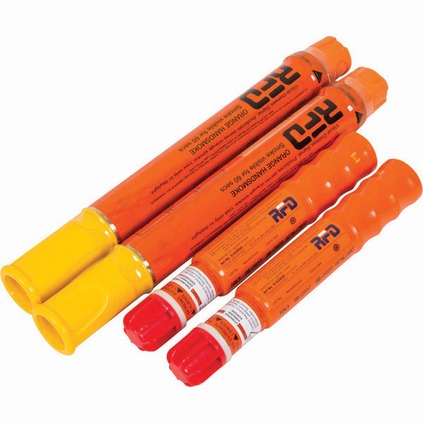
Your flares should be stored somewhere you can readily reach them in an emergency, but not where they will get constantly wet over a long period of time. If you store them in a sealed bag make sure you can get that bag open with cold wet hands!
While it is law to keep a flare kit on board if venturing more than 2nm offshore, we recommend you carry at least one of each type of flare at all time (even on enclosed or inland waters).

They do have a shelf life and are intended to be replaced every 2 years - there is an expiry date printed on them.
Flares are intended to get the attention of emergency services once they are in the area - set them off when you can see your searchers approaching.
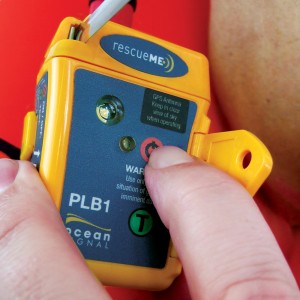
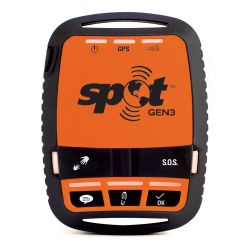
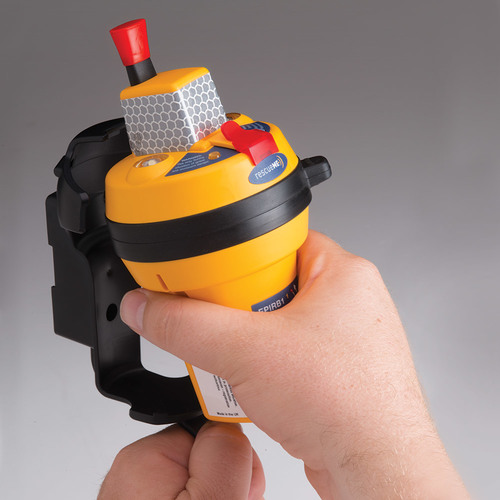


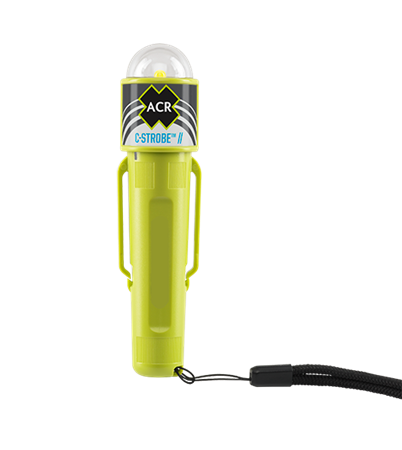
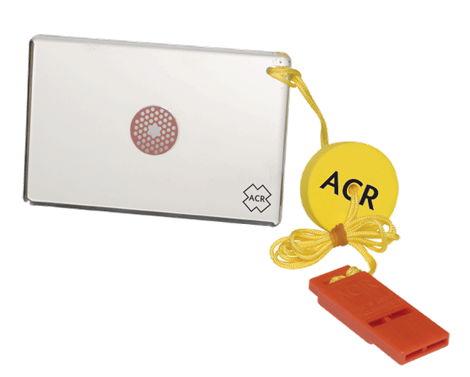
No comments yet. Login to start a new discussion Start a new discussion